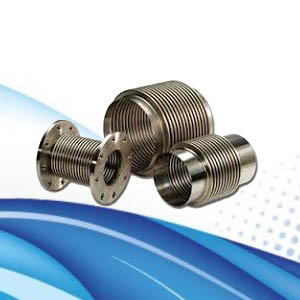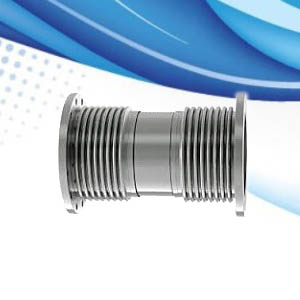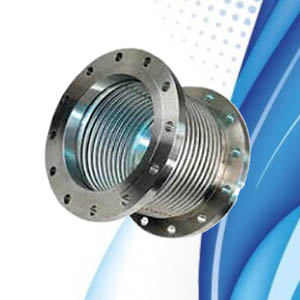Expansion Joints
We are a full service expansion joint supplier, offering a full range of flexible
components and customer support. Our expertise and manufacturing capabilities are
in Metal Bellows Expansion Joints and Rubber Expansion Joints,
Steel expansion joints are designed and built using the latest CAD techniques. Our
design engineers simulate form, function and installation prior to production. The
result is steel expansion joints which couldn't be easier to assemble and are fully
equipped to withstand the stresses they will face during downstream operation. steel
pipe connectors have above-average durability. Most of our steel expansion joints
have been in use for decades. They ensure trouble-free operation. Example applications
include mechanical engineering, industrial equipment construction and pipeline construction.
In the chemicals industry, plant engineering, gas and water supply, building services
engineering and exhaust systems engineering, too. Flexible steel expansion joints
have been popular and reliable construction elements for many years.



What steel expansion joints do:
- Compensate motion
- Compensate expansion
- Reduce tension
- Damp vibration and noise transmissions
- Compensate ground and foundation settling
- Compensate inaccurate assembly
- Serve as dismantling joints on fittings
Axial expansion joints
Structure: Steel bellows with adapters (flange, weld-on end or thread). Movement
absorption: Axial shifting and minor movements on all sides of the expansion joint
can be absorbed. Axial expansion joints with two steel bellows are used to absorb
significant movements.
Fixed points: Stable pipeline fixed points and a correct and proper pipeline are
required to absorb axial forces.
Lateral expansion joints
Structure: Steel bellows with lateral motion tensioning system and flanges
or weld-on ends.
Movement absorption: Lateral shifting of the expansion joint can be absorbed.
The tensioning system absorbs axial stresses and relieves the load on the pipeline
fixed points. Lateral expansion joints with two steel bellows and a distance pipe
are used to absorb significant movements.
Fixed points: Only light fixed points are required to absorb lateral displacement
and friction forces.
Angular expansion joints
Structure: Steel bellows with tie bar and flanges or weld-on ends The centre
of rotation of the tie bar is located in the centre of the bellow.
Movement absorption: Angular movements of the expansion joint can be absorbed.
The angular joints regulate a defined angular movement, absorb axial stresses and
relieve the load on the pipeline fixed points. A distinction is made between hinged
angular expansion joints (angular movement of the bellows is diverted on one level)
and cardan-joint angular expansion joints (angular movement of the bellows is diverted
on two levels).
Fixed points: Only light fixed points are required to absorb angular displacement
and friction torques.